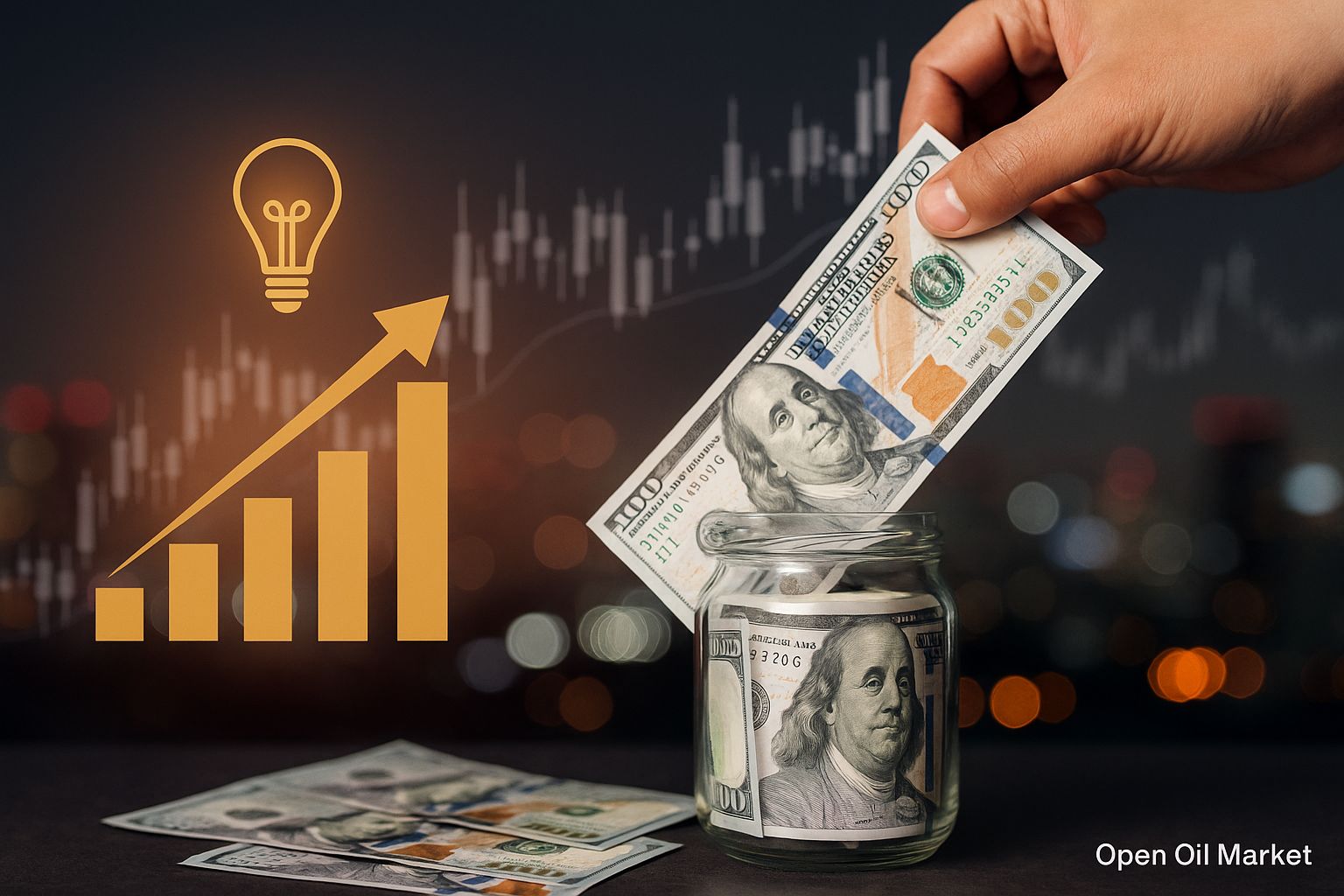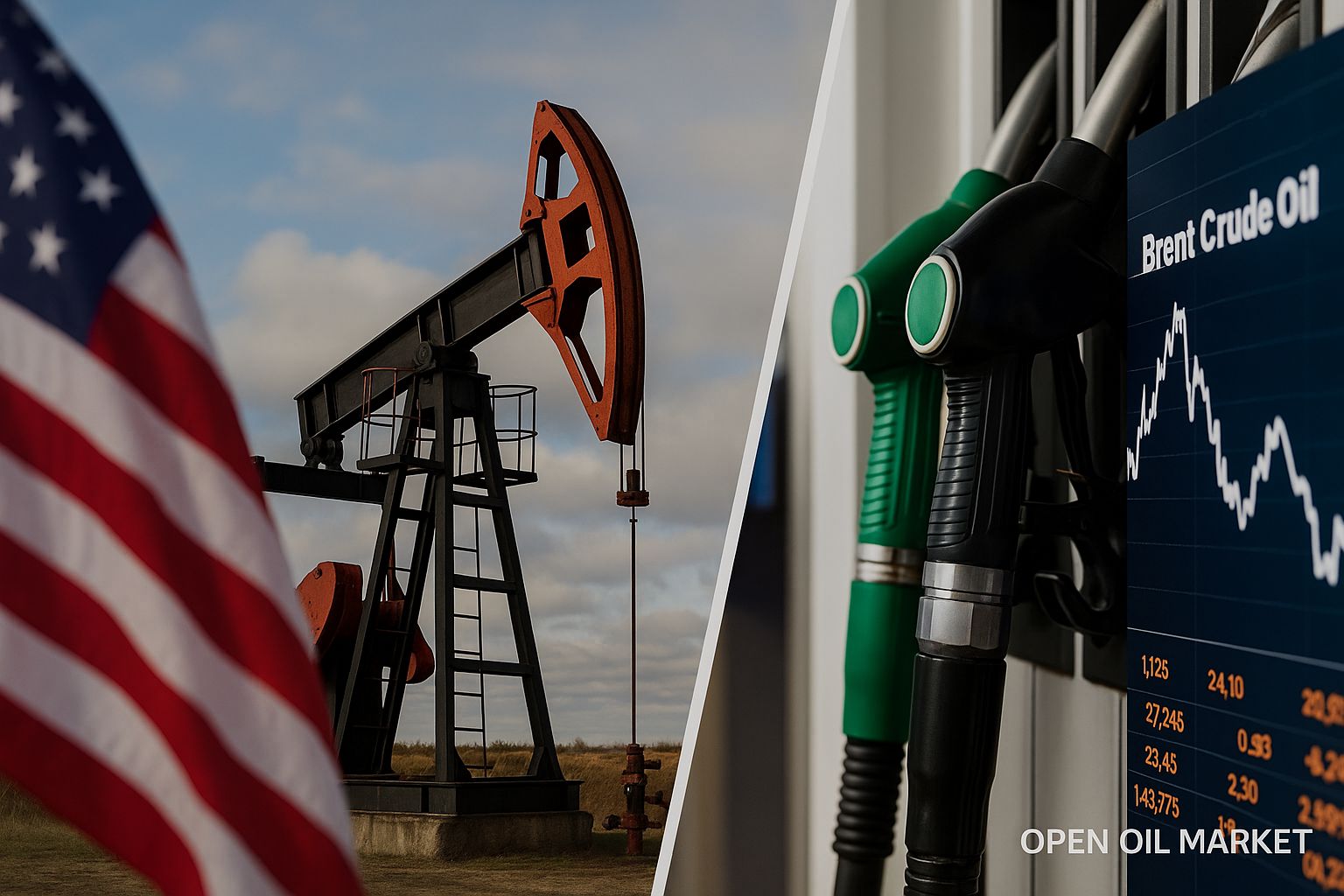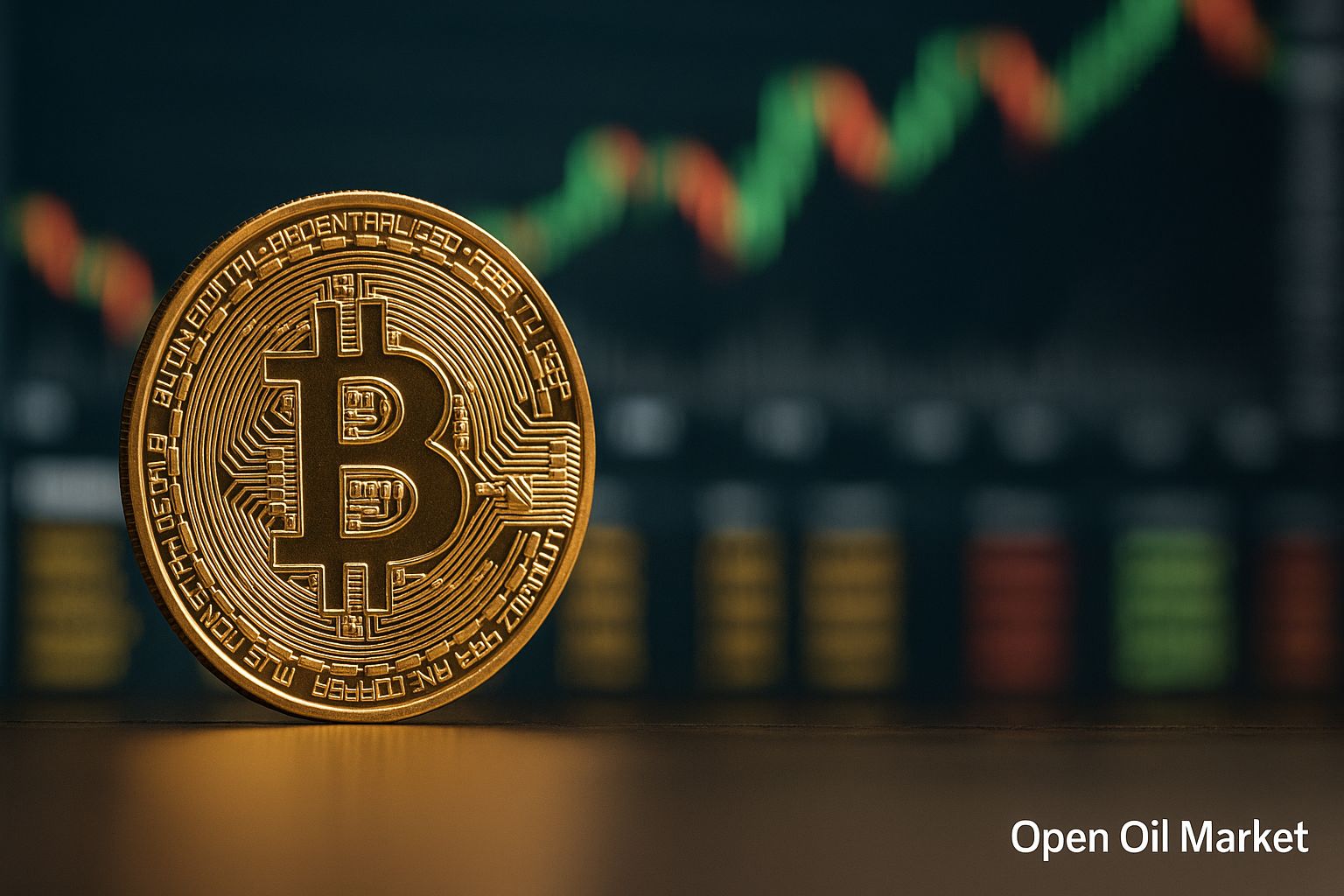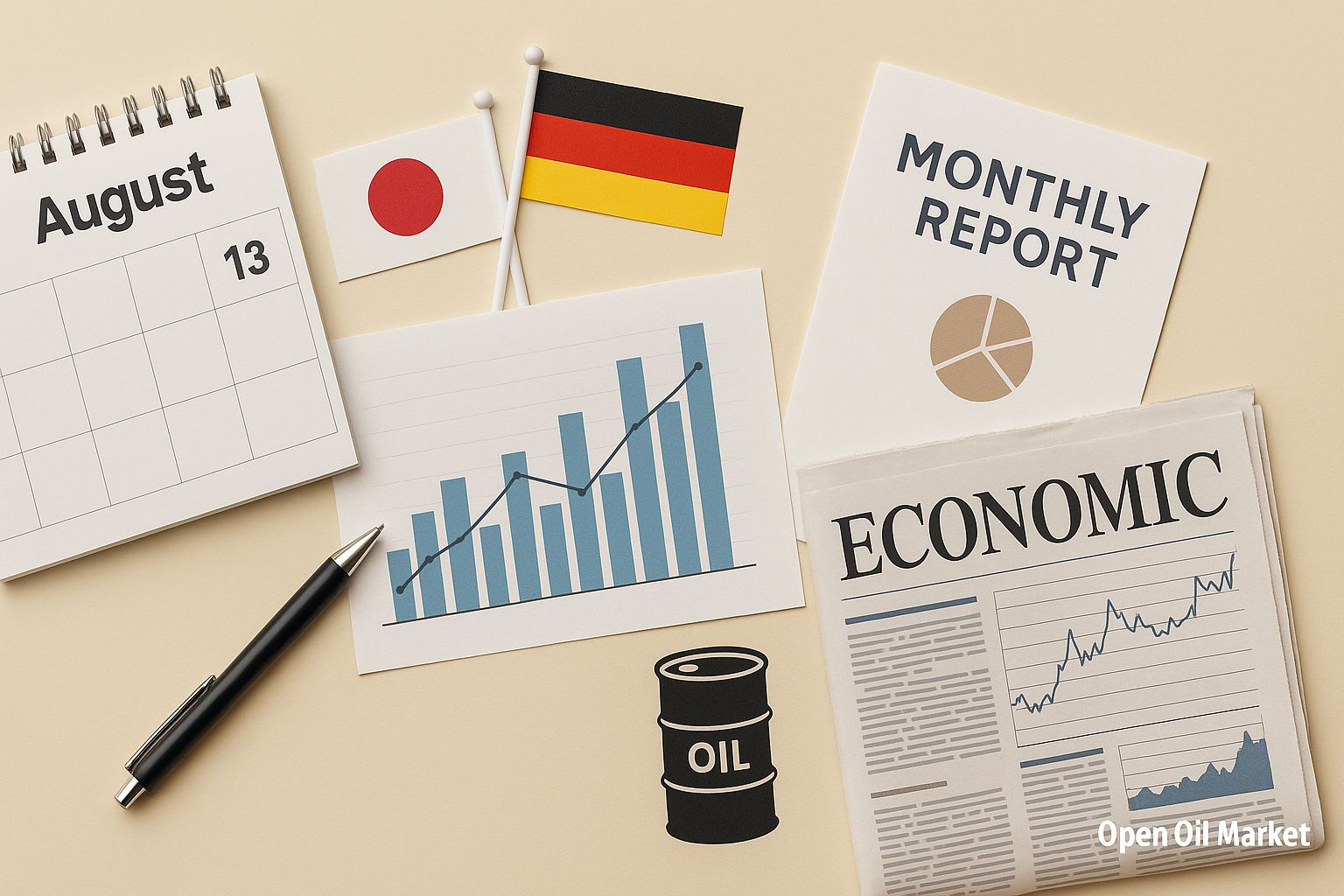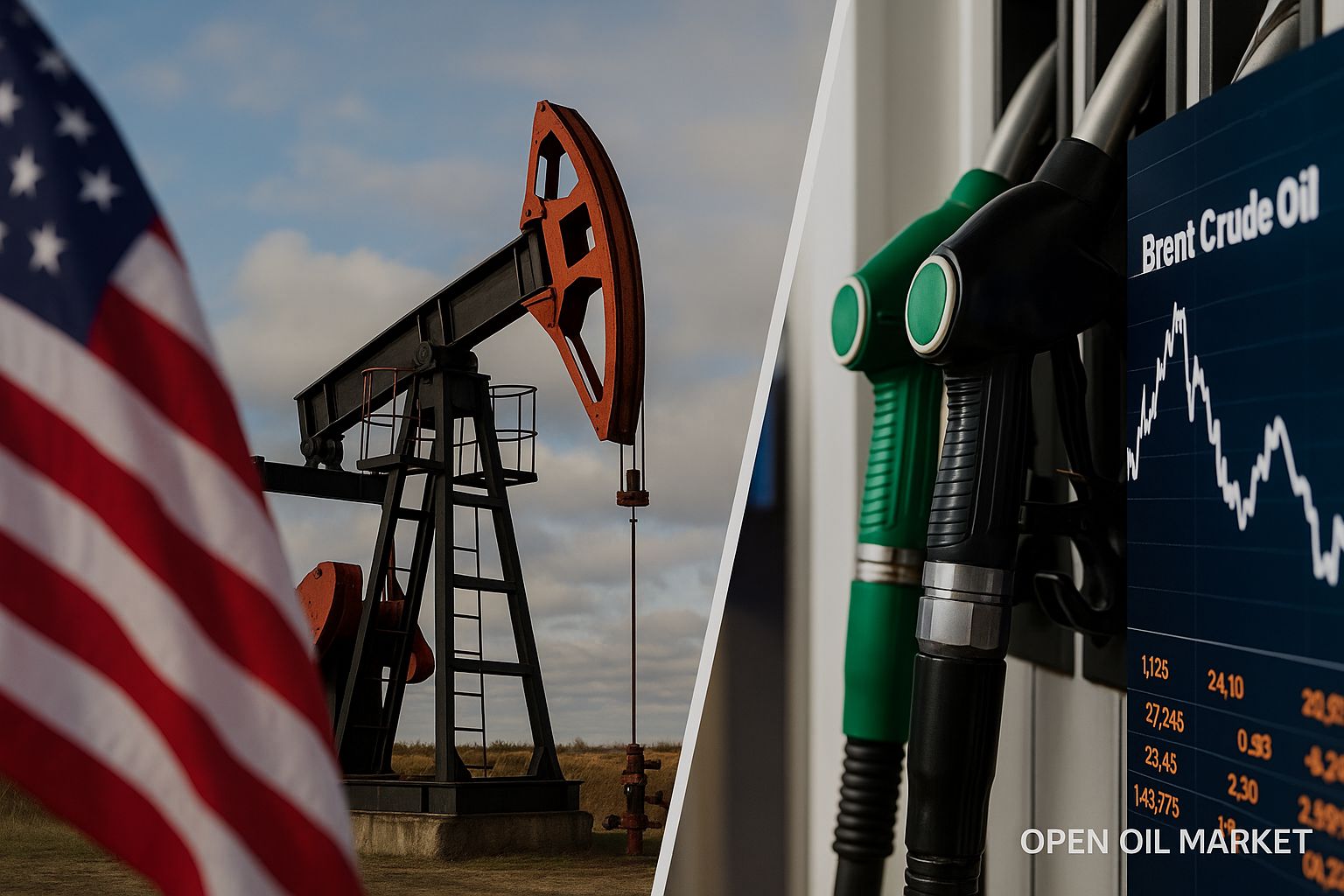
Current Energy Sector News as of August 13, 2025: US Sanctions Against China and India, Rising Gasoline Prices in Russia, Stability of Brent Oil, European Gas Market Situation, Trends in Renewable Energy and Traditional Generation, and Investor Forecasts.
Current events in the fuel and energy complex (FEC) as of August 13, 2025 attract investor attention due to their ambiguity. Geopolitical tensions continue to escalate: Washington is expanding its sanctions pressure and hints at measures against China following India. Simultaneously, global oil prices remain relatively stable in the mid-$60 range per barrel, reflecting a balance between risks and OPEC+ efforts. In Russia, exchange prices for petroleum products have reached historic highs despite a ban on fuel exports and subsidies – the government is preparing new steps to stabilize the domestic market. Europe is rapidly filling its gas storage facilities for winter, utilizing the influx of LNG and alternative supply routes. At the same time, the global energy transition is gaining momentum, although short-term needs are forcing several countries to revert to traditional hydrocarbons. Below is a detailed overview of key news and trends within the energy sector.
West Expands Sanctions Against Energy Resource Exporters
The US and its allies are intensifying sanctions pressure aimed at limiting Russia's revenue from oil and petroleum product trade. Following the western coalition's decision to lower the price cap on Russian oil from $60 to $47.6 per barrel (the new "price ceiling" will take effect on September 3), Washington has adopted even tougher rhetoric. The administration of President Donald Trump is tightening compliance controls regarding sanctions and considering additional measures against buyers of Russian hydrocarbons. Recall that on August 6, the US already imposed a 25% surcharge on existing import duties on goods from India – thus, the overall tariff for Indian exports to the US has doubled to 50%. Now on the agenda are potential steps against China: the US Department of the Treasury is openly discussing the possibility of 100% tariffs on all Chinese exports to the United States if Beijing does not reduce its purchases of Russian oil.
The stringent signals from Washington maintain a high level of uncertainty in the global energy market. Other countries are joining the sanctions: Switzerland has synchronized its restrictions with the EU by lowering the price cap to $47.6 per barrel for Russian oil. Western traders and carriers have also been warned about penalties for circumventing established rules. The new wave of sanctions and tariffs is prompting oil market participants to rethink logistics and seek ways to minimize the risk of supply disruptions. Many companies are factoring potential barriers into their plans – from complications in insuring tankers to a possible shortage of certain oil grades due to redirected flows.
India Takes Advantage of Discounts, China Increases Purchases of Russian Oil
The largest Asian importers of Russian oil are demonstrating a determination to protect their interests and adapt to new conditions. India openly states that it cannot abruptly abandon Russian crude, which is vital for its energy security. Amidst US pressure, New Delhi has secured additional preferences from Moscow: according to industry data, Russian suppliers agreed to increase the discount on Urals oil by approximately $5 per barrel relative to the indicative Brent price to retain the Indian market. In effect, Russia is compelled to offer India even cheaper oil in a bid to maintain its share in this key Asian segment. For New Delhi, this represents a significant advantage: India's state bank estimates that a complete abandonment of Russian imports would cost the economy about $9 billion in the current fiscal year and up to $12 billion in the next. Such a high price for sanction loyalty forces Indian leadership to maintain cooperation with Moscow. In protest against external pressure, the Indian delegation even canceled a planned visit to Washington, where a large trade deal was supposed to be concluded.
China, another key buyer of Russian oil, is also optimizing its import structure in response to new realities. According to analysts from Energy Aspects, Chinese refineries have significantly reduced the volume of oil requests from their traditional partner, Saudi Arabia, due to the increased availability of cheaper Russian oil. The rise in exports from Russia has allowed China to diversify its supplies and achieve more favorable pricing terms, gradually pushing out Middle Eastern competitors. Thus, the sanctions standoff is indirectly leading to a redistribution of global oil flows: the share of Russian barrels in Asia is growing, while Middle Eastern producers may face a shrinking market. If the US carries out threats of strict tariffs against China, Beijing is likely to take reciprocal actions – ranging from diplomatic pressure to actively utilizing alternative currencies and insurance mechanisms in energy transactions to lessen dependence on the Western financial system.
Oil Market: Price Stability Amid Continuing Uncertainty
Global oil prices have stabilized within a relatively narrow range following a recent decline. By mid-August, benchmark Brent oil is trading around $66–67 per barrel, while American WTI is approximately $64. There are no significant fluctuations in prices, indicating a fragile equilibrium between supply and demand. Various factors are influencing price dynamics, none of which are currently poised to disturb market balance:
- Demand support: US Energy Department statistics indicated a significant reduction in commercial oil inventories (by ~3 million barrels over a week), signaling robust demand for fuel in the US. This has given the oil market moderate optimism.
- Geopolitical risk: Washington's sanction actions (such as tariffs against India) have paradoxically propelled prices upward as traders account for potential disruptions and a rethinking of oil flows should conflicts escalate.
- Restraining factors: OPEC+ proactive policies have already been factored into prices – the alliance is gradually increasing production to boost supply. Additionally, concerns about a slowing global economy and weak demand in China prevent prices from surging. Many analysts expect that by the end of the year, Brent will fluctuate within the $60–70 per barrel range without any new price spikes.
In such circumstances, market participants are closely monitoring news and announcements. Any unexpected events – from hurricanes in the Gulf of Mexico to progress (or setbacks) in peace talks surrounding Ukraine – could disrupt the fragile balance. So far, the relative stabilization of prices is beneficial for refiners and consumers, providing the industry a breather after the high volatility of recent years.
OPEC+ and Demand Prospects: Cautious Increase in Production
OPEC+ countries are maintaining a course for gradual production increases, striving to prevent market imbalance. In early August, key participants of the deal (Saudi Arabia, Russia, the UAE, and others) confirmed a planned increase in total output quotas by 547,000 barrels per day starting September 2025 – a premature rollback of the remaining voluntary restrictions that have been in place since 2023. The market reacted calmly to these steps, as they were anticipated and factored into price forecasts. The alliance demonstrates unity and readiness to recalibrate production if necessary: on September 7, at the monitoring committee's meeting, OPEC+ ministers will assess the situation and discuss the fate of remaining cuts (1.65 million b/d, formally extended until the end of 2026).
Simultaneously, the latest OPEC monthly report reaffirms the cartel's confidence in stable demand. Key points from the new forecast include:
- The global economy is expected to grow by 3% in 2025 (upgraded from 2.9%), providing a foundation for sustained energy demand.
- Global oil demand growth in 2025 is forecast at +1.29 million b/d (unchanged), while the 2026 estimate has been raised to +1.38 million b/d.
- OPEC+ production increased by approximately 329,000 b/d in July. Despite growth, the actual volume fell slightly short of the plan (shortfall of about 47,000 b/d) due to voluntary restrictions from several participants.
- In July, Russia boosted production by 98,000 b/d and even exceeded its official quota by 17,000 b/d, indicating a commitment to preserving export volumes.
Overall, OPEC assesses the situation positively: the upgraded forecast for the global economy and moderate growth in oil demand suggest that energy consumption will continue to set records, despite price challenges. At the same time, OPEC+ strives to maintain a fragile balance: production increases are gradual to avoid both shortages and oversupply in the market. Additional barrels are entering the market amid ongoing geopolitical risks; thus, their influence on prices remains limited. Experts expect OPEC+ to continue flexibly managing quotas, especially if external factors (sanctions, recession, emergencies) begin to significantly impact the oil market.
Russian Oil Product Market: Record Gasoline Prices and Government Response
The domestic fuel market in Russia faces unprecedented price increases despite previously taken measures. Since late July, a full ban on the export of gasoline and several other petroleum products has been in place (tentatively until August 31) – this emergency measure aims to direct maximum fuel volumes to gas stations and cool the wholesale market. However, the effect has been limited so far: exchange quotations continue to set new highs. As of August 12, the price of AI-95 gasoline at the Saint Petersburg International Commodity Exchange reached ~80,500 rubles per ton – a new historical record. AI-92 gasoline is also nearing the 70,500 rubles/ton mark, matching a two-year high. For comparison, prices on the exchange at the beginning of the year were almost half as low, and just over the summer months, gasoline has risen by more than 30%.
Retail prices at gas stations are also creeping upwards, albeit at a slower pace. According to industry associations, the average price for AI-92 in Moscow has exceeded 59 rubles/liter, with AI-95 around 65–66 rubles/liter, reflecting an increase of 10–12% compared to early-year levels (for context, overall inflation is around 8%). The sharp rise in wholesale prices has already started to impact the margins of independent gas stations: experts note that some retailers are currently losing money on selling a liter of gasoline, as retail prices are administratively restrained and have not kept pace with exchange rates.
The Russian government is preparing responsive actions to stabilize the situation. Deputy Prime Minister Alexander Novak is convening a special meeting with the leadership of major oil companies on August 14 to discuss measures for keeping fuel prices in check. Additional support measures for the market are expected to be discussed. Among the considered steps are:
- Increasing the mandatory sale quota of gasoline and diesel on the exchange from the current 15% to 17% of output to enhance supply in the domestic market and curb speculative price growth.
- Adjusting the damping mechanism for refining subsidies – in the case of further unfavorable price developments, authorities may consider temporarily changing the formula or suspending payments to reduce budgetary burdens and stimulate companies to keep prices stable.
However, according to official statements, there is no risk of fuel shortages in the country – wholesale fuel stocks are sufficient, and refineries continue their operations. Experts point out that the current price spike is caused by a combination of factors: from seasonal demand growth (summer transport, agricultural activities) to external conditions. Infrastructure emergencies also contributed; increased drone attacks on certain refineries necessitated unplanned repairs, temporarily reducing production. Consequently, the market balance is still disrupted. Authorities and industry participants must navigate a delicate compromise between the need to contain prices for consumers and maintain the profitability of oil companies. The outcomes of the upcoming meeting will be key indicators for future policy: it is expected that a combination of market mechanisms (increasing supply) and governmental tools (subsidies, tax maneuvers) will gradually ease the tensions in the fuel market.
Gas Sector: Europe Accelerates Storage Fill-Up Before Winter
The European gas market is entering the fall season fully prepared. EU countries are actively accumulating gas reserves, aiming to ensure energy security ahead of winter. As of mid-August, underground gas storage in the European Union was filled to nearly three-quarters of total capacity – significantly above the average seasonal levels of previous years. According to Gas Infrastructure Europe, total reserves exceeded 77 billion cubic meters (over 72% of capacity) as early as August 10 and continue to grow. Europeans have injected over 40 billion cubic meters of gas over the summer months, nearing the target of 90% capacity by November 1. Current filling rates indicate a high likelihood of achieving – or even exceeding – planned reserves ahead of schedule.
High storage levels and a steady influx of liquefied natural gas (LNG) through terminals maintain a relatively calm pricing situation. Summer quotes at the European TTF hub are holding in the range of $330–360 per thousand cubic meters, several times lower than peak crisis levels in 2022. After rerouting import channels, Europe has noticeably reduced its dependence on pipeline gas from Russia: since January 2025, transit through Ukraine has been completely halted (after the contract with Gazprom concluded), and northern routes are no longer operational (the Nord Stream pipeline has been put out of commission, and transit through the Yamal-Europe pipeline has ceased due to sanctions). In this context, the main volume of Russian gas entering the EU is now through the southern corridor – via the Turkish Stream and the Balkans – at about 50 million cubic meters per day, which is a small fraction of previous supplies.
Europe is compensating for the vacated niche with record imports of LNG from other regions. LNG receiving terminals are operating at high capacity, welcoming gas carriers from the US, Qatar, African countries, and other exporters. In July 2025 alone, roughly 11 billion cubic meters of LNG were imported, representing several percentage points increase compared to the previous year. Thanks to diversified sources and accumulated reserves, the European gas market is now much better prepared for winter than it was two years ago. However, experts warn of persisting risks: a harsh winter can drastically increase demand even with full storage, furthermore the competition with Asian buyers for new LNG shipments could intensify if the Asian economies accelerate. European regulators and energy companies continue to monitor the situation closely, ready to take additional measures if necessary – from consumption limitations to emergency fuel purchases. For now, the balance in the EU gas market appears relatively stable, with moderate prices creating favorable conditions for the region's industry and energy sector ahead of the heating season.
Energy Transition and Traditional Generation: Seeking Balance
The global trend towards renewable energy development (RES) continues to accelerate, but short-term needs compel countries to sustain traditional generation as well. In 2024, the share of electricity generated in Europe from renewable sources (solar and wind power) surpassed that produced from coal and gas power plants for the first time. This significant achievement in the energy transition confirms the effectiveness of multibillion-dollar investments in “green” energy. In the first half of 2025, fossil fuel-based electricity generation in the EU fell by 17% compared to last year, while generation from solar and wind sources hit historic highs. A similar dynamic is evident globally: capital investments in clean energy are increasing at double-digit rates. According to the IEA, total investments in the energy sector are expected to exceed $3 trillion in 2025, with over half of this amount dedicated to RES projects – from solar parks to power grid upgrades and energy storage systems.
However, the realities of energy supply dictate the need for balancing new and old technologies. High natural gas prices, weather fluctuations, and periodic dips in RES generation (such as on windless or cloudy days) compel authorities to temporarily revert to coal and traditional gas to avoid electricity shortages. For instance, in the US, after years of decline, the share of coal generation has increased again: in the early months of 2025, about 25% of electricity was generated from coal-fired power plants – the highest level in several years. In several rapidly growing Asian economies (China, India, Vietnam, etc.), coal demand also remains high as energy systems must meet peak consumption demands. These facts emphasize that the transition to clean energy is a gradual and complex process. The world in the upcoming years will still largely rely on oil, gas, and coal to ensure reliable energy supply. Nevertheless, the long-term trajectory remains unchanged: each passing year brings record levels of RES capacity additions, increasing their share in the global energy balance and moving us closer to a carbon-neutral future.
Prospects for Investors and Participants in the Energy Sector
The overall picture of mid-August 2025 news reflects the complexity and diversity of challenges in the energy sector. Geopolitical factors – from the sanctions standoff between the US and key Asian economies to changes in OPEC+ agreement conditions – are creating heightened uncertainty for companies. Traders and energy resource producers must rapidly adapt to the new conditions: reconfiguring export chains, incorporating possible tariff barriers, and price regulation into budgets. At the same time, fundamental market trends instill cautious optimism. Global oil prices have stabilized after upheavals, reaching relatively comfortable levels for consumers, with no significant jumps in sight, largely due to coordinated producer actions. The European Union enters the winter period with record gas reserves, significantly diminishing the risks of shortages and price shocks during the cold months. Investments continue to flow robustly towards low-carbon energy, opening up new avenues for growth and innovation.
For investors in the fuel and energy complex, it is time to reassess risks and strategies. Traditional oil and gas projects are facing growing challenges – profitability is being squeezed due to sanctions, export tariffs, and the need to subsidize domestic markets. Yet, new opportunities are arising simultaneously: the energy transition stimulates demand for energy storage technologies, renewable generation, hydrogen infrastructure, and electric transport. In the short term, market participants will be focused on the development of the sanctions dispute between Washington and the largest Asian importers, the effectiveness of measures to cool the fuel market in Russia, as well as further steps from OPEC+ and weather factors affecting gas demand. Experts advise maintaining flexibility and diversifying assets: companies that can timely adapt to shifting conditions will not only minimize losses but also benefit from emerging trends – whether through the booming RES sector or recovery in hydrocarbon prices. In the context of a fragile balance in energy markets, the ability to respond quickly to external changes becomes a key success factor for investors and businesses within the energy sector.

